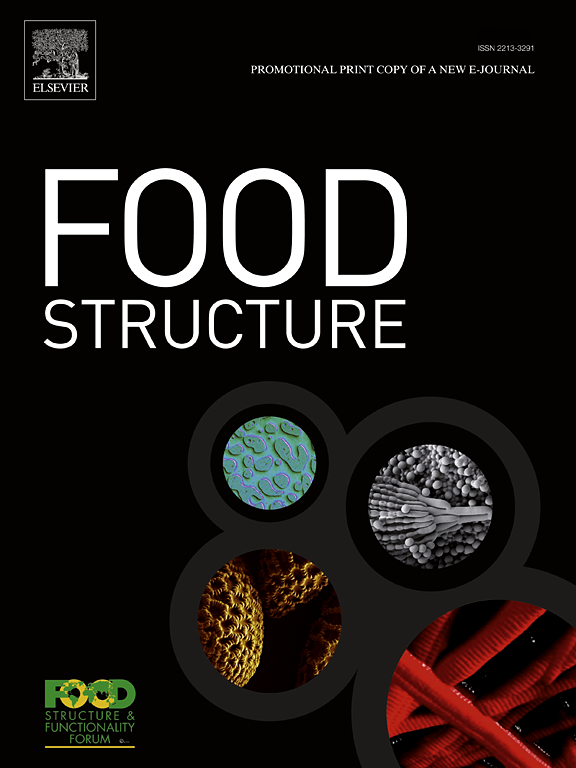Ultrasonic-assisted spray drying as a tool for improving the instant properties of egg white powder
Abstract
The mechanism by which high-intensity (20 kHz) ultrasonic treatment affected the rehydration performance and microstructure of egg white powder (EWP) was explored in this study. The wettability and dispersibility of EWP prepared from high-intensity ultrasound treated egg white liquid were observed to have an exciting enhancement. Furthermore, the most excellent dispersibility (65.67 s), solubility (90.33 g/100 g) and stability (98 %) of EWP were detected when ultrasonic treatment (120 W, 20 kHz, 10 mm ultrasonic horn) was performed for 10 min. SDS-PAGE results showed that ultrasonic treatment promoted the depolymerization of the original protein macromolecular aggregates. The particle size and scanning electron microscopy results also indicated that the particle size of EWP tended to decrease. Additionally, the zeta potential and surface hydrophobicity analyses suggested a tendency to first increase and then decrease over time. Overall, the instant properties of EWP were improved due to the changes of protein microstructure and conformation caused by ultrasonic treatment. These results revealed the mechanism of high intensity ultrasound affecting the instant properties and microstructure of EWP, which provided a theoretical basis for improving the rehydration of other food protein powder.


 求助内容:
求助内容: 应助结果提醒方式:
应助结果提醒方式:


